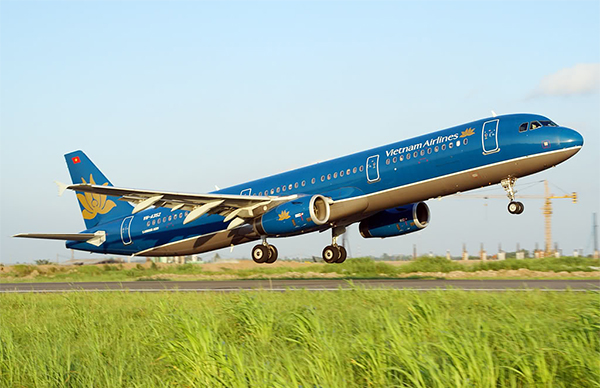Vietnam Airlines sets September IPO date

Vietnam Airlines illustration photo
The information was released by Deputy Minister of Transportation Nguyen Hong Truong, at a press conference held on April 2 in Hanoi.
“If this go according to plan, Vietnam Airlines will implement its IPO this September,” Truong said.
The equitisation of Vietnam Airlines would mark a new era for the state-owned carrier, which was initially planned for 2007. But because of difficulty selecting consultants and the economic crisis, the IPO is only now back on the table.
The share issue, along with the possible sale of a strategic stake in the firm is still under discussion but both are aimed at increasing the carrier’s competitiveness in the increasingly crowded Asian marketplace.
“If it goes forward, the IPO could raise capital for expansion. Perhaps even more significantly, it would put Vietnam Airlines on a more even playing field with Southeast Asia’s other five main flag carriers, all of which are now publicly traded,” stated the Centre for Aviation, a leading global aviation news, analysis and research provider.
Vietnam Airlines now operates in 21 cities throughout the country and 28 international destinations in Asia, Europe and Australia. Its network extends to 26 countries and territories.
Last year Vietnam Airlines hosted 14.7 million passengers for both domestic and international flights. At this time it is the market leader in Vietnam, accounting for 40 per cent of international air routes in and out of Vietnam and 61.4 per cent of domestic.
The airline’s revenue in 2013 reached VND54.1 trillion ($2.57 billion). Though this was 1.9 per cent below its goal for the year, its saw profits exceed their stated goal by 62.4 per cent with VND140 billion ($6.6 million).
According to the Centre for Aviation, in entering this new phase, Vietnam Airlines is confident it can tap into the rapid growth of its home market using both its main full-service brand and its joint venture budget airline Jetstar Pacific, in which it holds a 70 per cent stake. Australia’s Jetstar holds 30 per cent.
Vietnam Airlines has a bright future as it maintains a leading position in one of the world’s fastest growing markets, with about 62 per cent of domestic marketshare (75 per cent when including Jetstar) and 40 per cent of international. But challenges are sure to arise as the firm comes under the scrutiny of a public listing and grapples with its strongest local competitor yet.
Vietnam Airlines’ domestic market share fell sharply from nearly 80 per cent in 2011 to 61.4 per cent in 2013 because of increasing competition from low-cost carrier VietJetAir, only two years old.
VietJetAir marked its second anniversary on December 25 last year, but in that short time has already taken over 25 per cent of domestic market share, reported the centre. The carrier aims to capture 45-50 per cent by the end of 2015 as it grows its domestic network up to a planned 20 destinations, from 11 at current.
In the international market, VietJetAir currently only serves Bangkok. But it aims to expand this to Cambodia, Hong Kong, Indonesia, Korea, Japan, Singapore and Taiwan by the end of 2014.
Not only facing competition in the domestic market, Vietnam Airlines also has mounting rivals such as new entrants Etihad, Emirates and Qatar.
In a report by Vietnam Airlines sent to the Ministry of Transport last December, the national carrier said its total market share was down 2.7 per cent by the end of last year.
What the stars mean:
★ Poor ★ ★ Promising ★★★ Good ★★★★ Very good ★★★★★ Exceptional
Latest News
More News
- Growth beckons for GenAI startups in Vietnam (November 21, 2024 | 17:47)
- SABECO to elevate Vietnam's beverage industry to global standards (November 21, 2024 | 17:36)
- ABeam Consulting Vietnam introduces BSQCD Purchasing Strategy Framework (November 21, 2024 | 16:40)
- Major railway requires debt considerations (November 21, 2024 | 12:07)
- Reviving a new life cycle for plastic waste (November 21, 2024 | 09:16)
- Key balances maintained for industrial production (November 21, 2024 | 08:00)
- Ecolean Vietnam honoured with prestigious sustainability award (November 19, 2024 | 10:01)
- HEINEKEN Vietnam’s clear path towards net-zero (November 18, 2024 | 15:13)
- VLCA 2024 honours corporate governance excellence as listed companies raise the bar (November 18, 2024 | 09:00)
- High-tech personnel to drive competition (November 17, 2024 | 09:21)
















 Mobile Version
Mobile Version